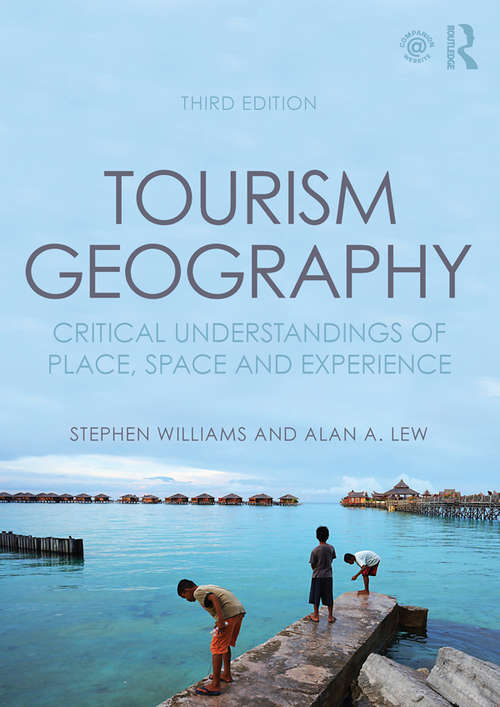Tourism Geography: Critical Understandings of Place, Space and Experience (3) (Contemporary Human Geography Ser.)
By: and
Sign Up Now!
Already a Member? Log In
You must be logged into Bookshare to access this title.
Learn about membership options,
or view our freely available titles.
- Synopsis
- For human geographers, a central theme within the discipline is interpreting and understanding our changing world - a world in which geographic patterns are constantly being reworked by powerful forces of change. These forces include population shifts, new patterns of economic production and consumption, evolving social and political structures, new forms of urbanism, and globalisation and the compressions of time and space that are the product of the ongoing revolutions in information technology and telecommunications. This book attempts to show how tourism has also come to be a major force for change as an integral and indispensable part of the places in which we live, their economies and their societies. When scarcely a corner of the globe remains untouched by the influence of tourism, this is a phenomenon that we can no longer ignore. Tourism is also an intensely geographic phenomenon. It exists through the desire of people to move in search of embodied experience of other places as individuals and en mass and at scales from the local to the increasingly global. Tourism creates distinctive relationships between people (as tourists) and the host spaces, places and people they visit, which has significant implications for destination development and resource use and exploitation, which are exhibited through a range of economic, social, cultural and environmental impacts that have important implications for local geographies. This third edition of Tourism Geography: critical understandings of place, space and experience presents an essential understanding of critical perspectives on how tourism places and spaces are created and maintained. Drawing on the holistic nature of geography, a range of social science disciplinary views are presented, including both historical and contemporary perspectives. Fundamentally, however, the book strives to connect tourism to key geographical concepts of globalisation, mobility, production and consumption, physical landscapes, and post-industrial change. The book is arranged in five parts. Part I provides an overview of fundamental tourism definitions and concepts, along with an introduction to some of the major themes in contemporary geographic research on tourism, which are further developed in subsequent chapters of this book. In Part II the discussion focuses on how spatial patterns of modern tourism have evolved through time from regional to global geographies. Part III offers an extended discussion of how tourism relates to places that are toured through their economic landscape, contemporary environmental change and socio-cultural relations. Part IV explores a range of major themes in the geographies of tourism, including place creation and promotion, the transformation of urban tourism, heritage and place identity, and creating personal identity through consumption, encounters with nature and other embodied forms of tourism experience. Part V turns to applied geography with an overview of the different roles of planning for tourism as a means of spatial regulation of the activity, and a look at emerging themes in the critical geography of contemporary and future geographies of tourism. This third edition has been revised by Dr Alan A. Lew, who becomes the new co-author of Tourism Geography. Some of the major revisions that I have incorporated include moving most of the case study boxes to the website http://tourismgeography.com, which will provide a growing wealth of new case studies, over time. I have also incorporated new material, reorganised some of the content to balance the topics covered, created a new concluding chapter that explores some recently emerging perspectives in critical tourism geography, and re-written the text to make it more accessible to a global English-speaking world. That said, the book is still very much the work of Dr Stephen Williams. As such, it maintains its original concise yet comprehensive review of contemporary tourism geography and the ways in which geographers critically interpret this important global phenomenon. It is written as an int...
- Copyright:
- 2015
Book Details
- Book Quality:
- Publisher Quality
- Book Size:
- 328 Pages
- ISBN-13:
- 9781135010164
- Related ISBNs:
- 9780415854436, 9780203743881, 9780415854443
- Publisher:
- Taylor and Francis
- Date of Addition:
- 05/25/22
- Copyrighted By:
- Stephen Williams and Alan A. Lew
- Adult content:
- No
- Language:
- English
- Has Image Descriptions:
- No
- Categories:
- Nonfiction, Travel, Social Studies, Earth Sciences
- Submitted By:
- Bookshare Staff
- Usage Restrictions:
- This is a copyrighted book.
Reviews
Other Books
- by Stephen Williams
- by Alan A. Lew
- in Nonfiction
- in Travel
- in Social Studies
- in Earth Sciences
